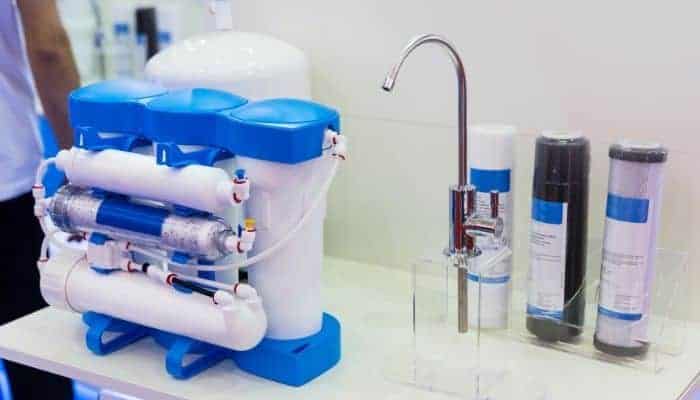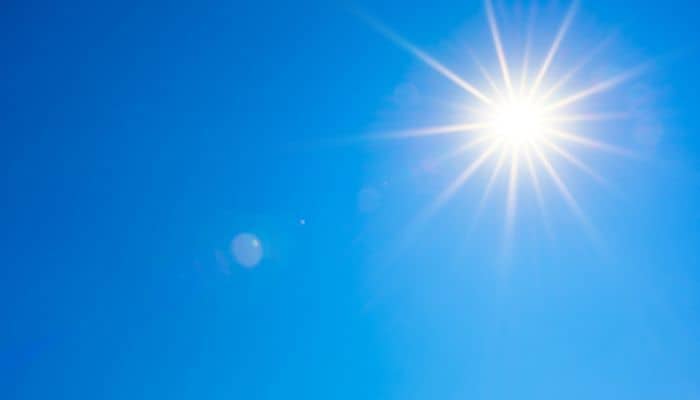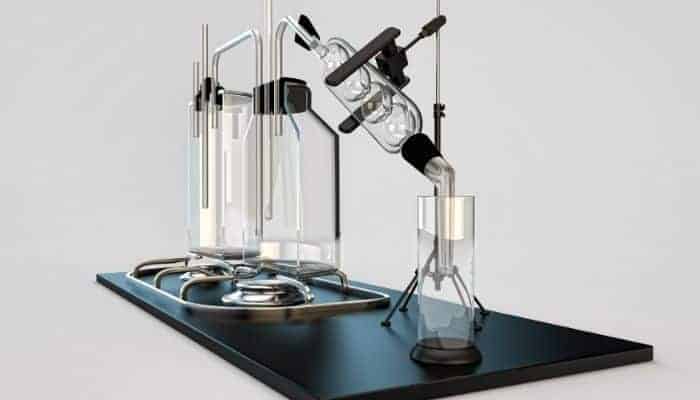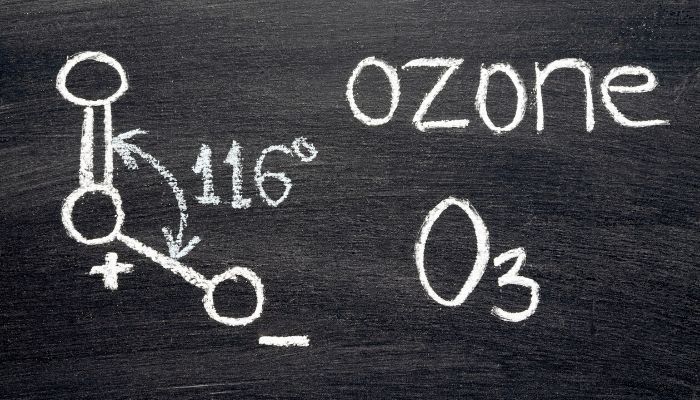In Brief: Water Purification Methods From Across the Globe
Different ways of purifying water globally include the use of filters, UV rays-based technology, ion exchange methods, reverse osmosis, Lifestraw, forward osmosis, distillation, boiling, bioremediation, use of bamboo charcoal, activated carbon, etc. The methods used involve both technological knowledge and ancient knowledge and practice of the process.
Why do we Need to Purify Water?
Clean water is a basic necessity.
The instances and intensity of water contamination and water pollution have only been increasing over the past couple of decades.
This has led to a massive increase in waterborne diseases including but not limited to diarrhea, typhoid, cholera, dysentery, etc.
According to the WHO statistics, waterborne diarrheal diseases are responsible for 2 million deaths each year, mostly in children aged under 5.
Contaminated water may sometimes also contain heavy metals in excessive quantities leading to severe health complications.
It has, therefore, become very important to purify water. Water that is used not only for drinking, but also for bathing, cooking, and cleaning requires purification.
Let us take a look at some ways in which water purification is carried on globally to meet this need.
Ways to Purify Water Across the Globe
The need for water purification has increased with the subsequent increase in water pollution.
Different populations across the globe have adhered to both technological advancements as well as traditional knowledge to find out ways to purify water.
Let us take a look at some of these water purification practices.
Boiling
Boiling is one of the most frequently and commonly used ways for purifying water.
It is mostly used for disinfection and the removal of biological contaminants from water. To purify water by boiling, you will need a heat source and a container for the water.
The water should be left boiling for 1-3 minutes to eliminate the contaminants.
If you have easy access to a heat source, this is a very convenient and quick method for ensuring water purification.
However, boiling will not be able to effectively remove some chemical contaminants, if present in water.
Ceramic filters
Ceramic filters were first introduced in Cambodia in 2002 by UNICEF and the Water Sanitation Program. These filters are made of fired clay.
Clay is mixed with sawdust or rice husk and fired in a kiln. The sawdust and rice husk burn away, creating tiny pores in the ceramic.
These pores are small enough to not allow for the passage of protozoa or bacteria in water.
Ceramic filters use gravity to facilitate the process and provide filtered water at the rate of 1-3 liters per hour.
These filters are frequently used in impoverished communities in developing nations.
Iodine
The use of iodine to purify water can be done in two ways.
They come as iodine tablets and iodine solutions. Iodine effectively removes bacteria, viruses, and some cysts from water.
The temperature of the water should at least be 21 degrees Celcius for the iodine to work, and the water must also be kept in dark containers as iodine may react with light.
The use of iodine may affect the taste, color, and smell of water.
It is also important to remember that some people are allergic to iodine. In such cases, iodine tablets and solutions should not be used.
NaDCC
NaDCC refers to Sodium Dichloroisocyanurate.
They come in tablet form which dissolves in water to react and for chlorine or hypochlorous acid. It is a safe and effective water disinfectant.
NaDCC is an inert and stable tablet and performs all the functions of chlorine without attaching and peculiar taste or odor to the water.
They are extremely effective against waterborne diseases, bacteria, cysts, and viruses. It is also effective against cyst Giardia.
It has also been approved for drinking water treatment by U.S EPA and WHO.
Chlorine
Chlorine is one of the most popular and easy ways to purify water.
They were first implemented in the 1920s and have since become an effective tool to tackle waterborne diseases.
They come in various forms including tablets, liquid, granules, as well as with different base agents like calcium hypochlorite and sodium hypochlorite.
They are extremely effective against biological contaminations but does alter the taste and smell of water.
They are also widely used in municipal water to treat large amounts of water for contamination.
Bone char filtration
Bone char filtration uses the crushed bones of cattle as a filtering technology.
This model was suggested by the students of University of Illinois as a cheap and convenient method of purifying water.
This method is effective in draining out heavy metals and other toxins from water. It is especially suited for areas where the arsenic content in water is very high, for example in Pine Ridge.
However, in areas or cultures where cow product ingestion faces cultural aversions, this method is not recommended.
The crushed and charred cattle bones are put inside a filter housing, and can then be used at home to purify water.
Lifestraw
Lifestraw is one of the cheapest and most effective ways of purifying water.
Often used in developing or poor countries and cultures, it eliminates potential pathogens like typhoid, cholera, and diarrhea from water.
Lifestraw uses a hollow fiber membrane that eliminates pathogens and bacteria from water.
It is an award-winning innovation that allows people to drink water directly from the source and filter it before it reached you.
Filtration
Filtration is probably one of the most common and widespread ways of purifying water.
Filters come in a wide variety of types, sizes, and efficacy, and different filters may target different types of contaminants while some are equipped to deal with all types of contaminants.
They usually use both activated carbon and highly porous material to absorb contaminants from water.
The pores of the filter are measured in microns and determine what materials are allowed to pass through it.
This mostly takes care of chemical contaminants and heavy metals, as well as mechanical contaminations.
Activated carbon, on the other hand, can eliminate pesticides, chlorine, and bacteria from water.
Reverse osmosis
Reverse osmosis is a highly effective way of eliminating all types of contaminants from water.
It is a pressure-driven system that uses a thin semi-permeable membrane to purify water.
Water is forced through the semipermeable membrane.
This membrane has really small pores that only allows for the passage of water molecules, while all other chemicals and toxins are held back.
One of the disadvantages of this system is that it demineralized water by taking out even those minerals that are considered necessary for humans.
It is a slightly expensive system and is used at home by people who can afford it.
Chlorine dioxide
The use of Chlorine dioxide as a tool to purify water is relatively new.
They usually come in the form of tablets or two-part liquids that when combined with water creates chlorine dioxide.
The chlorine dioxide liquids generally require mixing of two liquids and allowing them time to sit for a while before they can be introduced to water for purification.
Chlorine dioxide does affect the smell of water. It is also a relatively expensive and new method, and hence not widely used.
Bamboo Charcoal
This is an indigenous, eco-friendly, and cost-effective filtration mechanism first developed in Bangalore, India.
It is also known to be an ancient Japanese way of water purification.
Small pieces of bamboo charcoal are immersed in a jug of water.
The charcoal effectively absorbs and removes bacterial contamination, chlorines, and other toxins from water. The pieces are then taken out of the water, and the water is consumed.
It can easily be made at home if you have bamboo charcoal pieces.
Lifesack
This is a water purification device designed by industrial designers.
It was designed for poor and developing nations and includes a sack that doubles as a grain container and water storage.
Lifesack comes with straps that allow it to be carried on one’s back. Once the grains have been delivered, it allows you to fill water in it.
The bag’s thermal treatment process and UV-A radiation technology work together to eliminate contaminants from water.
‘Pure’ water bottle filter with UV rays
The ‘Pure water bottle: has been awarded the James Dyson award for its effectiveness and quickness in filtering water.
It was designed by Timothy Whitehead to provide clean and delicious water and has been considered a breakthrough innovation for water filtration in developing countries.
It uses the combination of 4-micron sized filters and a wind up ultraviolet light system to eliminate contaminants from water in about 2 minutes. It effectively removes up to 99.9% of impurities from water.
Solar balls
Solar ball is a solar-powered water purifier.
It is shaped like a hamster ball. It is highly recommended for use in sunny areas and can provide up to 3 liters of purified water in a day.
The spherical ball-like shape allows for the absorption of sunlight, which in turn leads to the evaporation of dirty water.
The water molecules condense and get stored separately, removing all the contaminants from them. It is increasingly being recommended for developing or poor nations, especially those that receive a lot of sunlight.
Bicycle filter
Also popularly known as ‘Cycloclean’, the bicycle filter is an effective water filtration innovation for areas that have little or no electricity.
It uses the energy generated by riding the bicycle to make the filters work.
It is equipped with a pre-filter and three regular filters.
They are effective in removing dirt, bacteria, and smell from water, and is highly recommended for situations when an area is struck with a natural disaster.
It was first developed by a Japanese company, Nippon Basic Co, and has proved to be quite popular in Japan.
Solar sterilization
Solar sterilization refers to the use of UV radiation and heat from the Sun to kill microbes like typhoid and diarrhea in water.
It is a rather simple process and requires the use of a plain plastic bottle with water stored in it and its exposure to the Sun for a few hours.
Solvatten started selling a more apt water disinfection device to allow for solar sterilization. It is a jerry can like container that opens from the middle and allows for the container to absorb more of the Sun’s rays.
These devices are also installed with a thermal detector which lets people know when the water is safe to drink.
Bioremediation
Bioremediation refers to the process of promoting the growth of beneficial microorganisms that can help in the removal of harmful pathogens.
Though this method has been studied in great detail and has proved to be useful in the removal of perchlorate and chloride compounds, its implementation has still to be considered.
Solar distillation
Solar distillation follows the same process as that of distillation except that it uses the heat and rays of the Sun to allow for evaporation and condensation of water.
It is a method that is extremely well suited for salty water. They are also effective in purifying muddy water.
Solar stills are devices that are often used for the process of solar distillation.
A solar still is a simple piece of glass or shaped plastic that allows for the Sunlight to shine through a clear panel onto the impure water.
This heats the water and allows it to evaporate.
The water then condenses into the underside of the panel. It is a method most highly recommended for poor areas or areas that do not have electrical power.
Forward osmosis
Forward osmosis relies on the natural process of osmosis, which translates to the tendency of water to move from areas of higher concentration to areas of lower concentration.
This method also uses a membrane, however, it is not reliant on pressure like reverse osmosis.
It uses two separate containers, one with the contaminated water, and the other with water and some kind of solute like salt. Water from the contaminated side will start to flow to the other side.
However, you will have to undergo the process of desalination after this, as the purified water is extremely salty.
Distillation
Distillation is one of the oldest and most common ways of purifying water, though it is not used very frequently in households because the process is very time-consuming.
It involves several steps. Water is brought to a boil and then allowed to evaporate, and then condensed back into liquid form.
The salts and contaminants stay behind when water is boiled, and the water is collected and stored separately after condensation.
Electric distillers are widely available now in the market.
Electrodialysis
Electrodialysis uses an electric charge to move water particles across the membrane.
This process is mostly used for the removal of salt from the water and is therefore well suited for salty water.
It is also a quick way of eliminating salt from the water and can desalinate large quantities of water at great speed.
UV light devices
The ultraviolet rays of the Sun are extremely destructive for microorganisms, and therefore very effective for disinfecting water. Many products function in the capacity of UV light devices.
These are mostly containers and storage tanks that allow for the exposure of water to ultraviolet rays thereby ensuring its disinfection.
Some of these devices are battery-free, and therefore, well suited for poor areas where there is no electricity. Others run on batteries as well. They are very effective against biological contamination.
Homemade gravel filters
This is an inexpensive and homemade way of purifying water that can be made using a plastic bottle.
The bottom of the plastic bottle is cut, and the bottle is filled with multiple layers of gravel, sand, and charcoal, and water is allowed to drip through them.
It is well suited for poor and developing nations, as well as areas that do not have access to technologically developed filtration mechanisms.
SODIS
SODIS refers to solar water disinfection, and uses the sun’s heat and rays to eliminate bacteria and other pathogens.
It is easy to use, very inexpensive, and will effectively damage almost all biological pathogens in water.
However, it is not particularly effective against chemical contamination. Therefore, it is well suited for areas where there is biological contamination in water.
Disinfectant Tablets
Disinfectant tablets are well suited for people who are traveling or are on a trip. All you need to do is put this tablet in your water and wait for it to dissolve and disinfect the water.
The time required may differ from one tablet to another. Another important thing to note while buying these disinfectants is their shelf life.
It should not be used after their shelf lives have expired. These tablets may affect the taste of water.
Bio sand filters
Bio sand filters, also known as slow sand filtration, was a water purification technology developed for developing countries.
They are made of locally available cement, sand, and pebbles, and a 2-inch standing water layer known as the biolayer.
Dirty water is poured on top which meets the standing water layer at which stage bacterial predation occurs.
The layer of sand traps the viruses present in water, and the pathogens die due to starvation.
The layer of gravel further ensures that all sediments and particles are trapped behind, while clean water moves through a tube and get collected.
Granular activated carbon adsorption
This is a very effective way of purifying water, and this technology is widely used in water filters developed for use at home.
It uses a form of activated carbon with high surface area, that binds free radicals in water and many toxic compounds, allowing contaminants free water to pass through the filter.
They are effective in removing chlorine and other chemical contaminants from water.
Ozone disinfection
Ozone is an unstable molecule that works as an oxidizing agent.
This is immensely damaging for waterborne organisms.
It specifically inactivates harmful protozoa that form cysts and also works well against most other pathogens.
This method is widely used in Europe and some areas in the US and Canada. No residual ozone is left in the water after the process is over.
Ion exchange
Ion exchange systems are specifically used to target the purification of hard water which contains a high concentration of calcium and magnesium ions in water.
They work by replacing or exchanging the calcium and magnesium ions with sodium ions. They use ion exchange resins to complete the process.
These resins can also be used to eliminate nitrite, lead, mercury, arsenic, and other heavy metals from water.
It is usually recommended for areas that face the problem of hard water.
Summary
Many different ways are used around the globe to purify water. While some of the ways are developed from a technological standpoint, others come from ancient and traditional, even tribal, sources of knowledge.
We hope that this article has substantially informed you about the different ways in which you can purify water in different places and scenarios.





